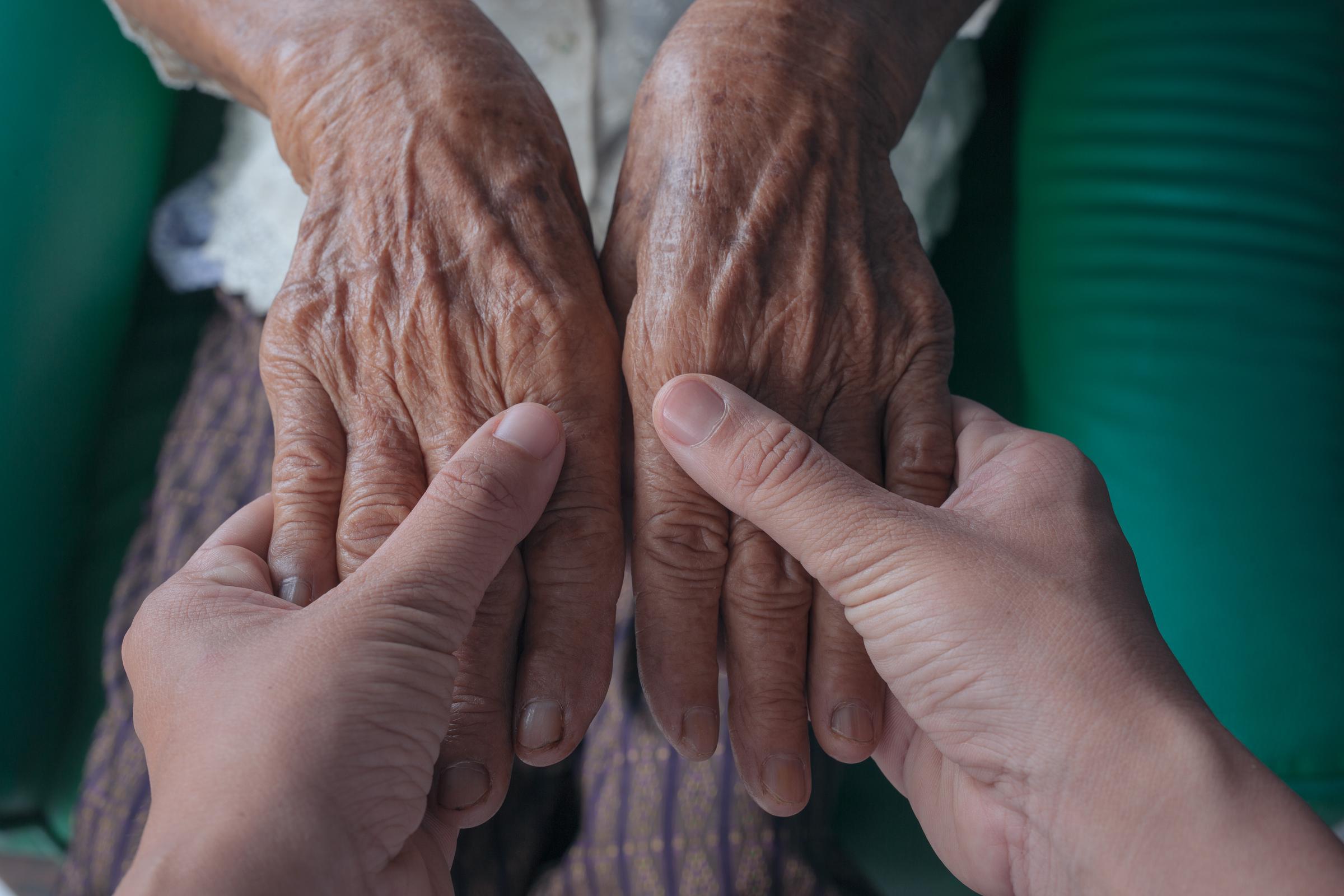
Farmers often face challenges from pests like rodents and insects that threaten their crops and spread diseases. In an amusing incident in New Brunswick, Canada, a mouse was found in a cannabis field, appearing “stoned” and passed out on a pile of leaves.
Colin Sullivan spotted the mouse raiding his garden for two consecutive days and shared pictures of the little critter enjoying the leaves before it succumbed. Eventually, the mouse was discovered lying on its back, seemingly unwell.
Sullivan decided to care for the mouse, placing it in a cage to help it recover. After six days, the mouse was healthy enough to return to the wild. Sullivan humorously recounted the experience on Facebook, saying: “I watched this little rascal munch on my plants until he dozed off”. He also noted that the mouse, missing one ear, might have been trying to cope with some stress, prompting him to intervene and provide a safe space for recovery.
Sullivan updated his followers about the mouse’s condition, stating it had a rough time but was gradually getting better, now eating just one leaf a day. “One day at a time”, he advised. When the mouse was finally released from “rehab”, Sullivan celebrated its recovery with a playful post titled “On The Rodent To Redemption”, highlighting the mouse’s journey and the importance of supporting those in recovery.

His posts garnered massive attention, with the first receiving over 461,000 shares and the follow-up accumulating more than 6,400 shares and 1,500 comments filled with jokes and encouragement. Commenters expressed their delight in the mouse’s recovery, with one suggesting that it might have experienced a wild adventure, while another thanked Sullivan for caring for the little creature.
Sullivan, who has personal experience with substance detox, dedicated a heartfelt message to his wife, Robyn, crediting her support for his long-term sobriety. Many people who initially came for the story of the mouse found themselves inspired by Sullivan’s message of hope and recovery. Cannabis became legal in Canada in 2018, with each province, including New Brunswick, establishing its own regulations.
The New Brunswick government emphasizes creating a responsible culture around cannabis use, educating the public on health implications, and reaping the economic benefits of the industry. In this province, individuals must be 19 or older to consume cannabis, and possession is limited to 30 grams. Public consumption is prohibited, and landlords can restrict tenants from smoking or growing cannabis, although they cannot prohibit cannabis use if tobacco smoking is allowed. It’s essential for New Brunswick residents to understand the risks of cannabis use to make informed decisions.
My Grandson Visited Me on National Grandma’s Day — What He Prepared for Me This Time Made Me Go Pale

When my grandson walked through my door on National Grandma’s Day, I expected tulips or chocolates. Instead, he brought something that made my heart race — and not in a good way. What he asked of me left me frozen, but what came next was something I’ll never forget.
They say you can feel it in your bones when something’s about to change, and let me tell you — I felt it that day.
It started like every other National Grandma’s Day, the one day I hold closer to my heart than my own birthday. My grandson, Jordan, has always made it special. Ever since he was a boy, he’s been my little ray of sunshine, showing up with chocolates, tulips, or just those three words that mean the world to me: “I love you, Grandma.”
But this year felt… off.

A sad older woman looking outside the window | Source: Midjourney
I’m Teresa, by the way. I’m 60 years old, widowed, and I live alone in the apartment my late husband, Walter, and I bought back in our early days. It’s not much, but it’s home. It holds memories, creaky floorboards and all. And Jordan, bless his heart, has been my greatest comfort since Walter passed five years ago.
I woke up that day, feeling that familiar buzz of excitement. I brewed my tea and sat by the window, keeping an eye on the street below.
Jordan is 22 now, but he’s never been late on Grandma’s Day. Never.
Yet by 10:10 a.m., my tea had gone cold, and the quiet in my apartment felt heavier than usual.

A vintage clock on the wall | Source: Midjourney
“Where are you, my sweet boy?” I whispered to myself, my trembling fingers tracing the delicate china cup. Memories of Jordan’s childhood danced before my eyes — his first steps, his laughter echoing through these walls, and the way he’d curl up next to me during storytime.
Each memory felt like a knife twisting in my heart as the minutes ticked by.
I tried not to let my mind wander too far. Jordan has his own life, of course — a job, friends, all the things young people juggle. But I couldn’t shake the uneasiness and nagging thought that something was different. I kept telling myself, “Don’t be silly, Teresa. He’ll be here.”
My hands began to shake slightly. Was it anxiety? Or something deeper, something my heart was trying to warn me about?

A desperate older woman lost in deep thought | Source: Midjourney
And then, around 11 a.m., just as I was refilling my tea, I heard the key turn in the lock. My heart skipped a beat.
“Jordan?” I called out, relief washing over me.
When the door opened, though, he didn’t look like himself. His smile was gone, replaced by a tightness in his jaw. He wasn’t carrying flowers or chocolates. He was holding something behind his back, and his eyes darted away from mine.

A young man entering a house | Source: Midjourney
“Oh, my Jordan,” I breathed, sensing something was terribly wrong. “What’s happened to you?”
“Grandma,” he said, his voice low and unsteady, “do you think all these years I’ve been giving you gifts for nothing?”
I felt a chill run down my spine. Something in his tone was so unlike the Jordan I knew. This wasn’t my loving grandson. This was a stranger.
“What?” I gasped.

A startled older woman | Source: Midjourney
He stepped further into the room, still holding whatever it was behind his back. “It’s time to repay for them,” he said quietly.
Tears welled up in my eyes. The warmth of our past birthdays and the love we shared felt like a distant dream now. What could have changed so dramatically?
“Repay?” I repeated, my voice trembling now. “Jordan, what are you talking about?”
His hand shook slightly as he pulled a folder from behind his back and placed it on the table between us. “Just… look at it,” he said, avoiding my eyes.

A young man holding a folder | Source: Midjourney
The silence between us was deafening, thick with unspoken pain and impending revelation.
I stared at the folder like it was some kind of foreign object, something that didn’t belong in my home. My chest felt tight, and I could barely get the words out.
“Oh, my sweet boy, what have you done?” The words trembled inside me.
“What is this, Jordan?” I asked.
“Just… open it, Grandma,” he said, still not looking at me.
With shaking hands, I flipped it open. Papers. Legal ones. My stomach churned as I scanned the top line: Transfer of Property Ownership.

A shocked older woman holding a stack of documents | Source: Midjourney
Tears welled up unexpectedly. These weren’t just papers. These were the death warrant of memories… of Walter, of our life together.
“Jordan,” I whispered, my voice breaking, “what’s going on here?”
He finally looked at me then, his face brimming with guilt and determination. Tears glistened at the corners of his eyes. “Grandma, it’s time for you to move out of this apartment,” he said.
I blinked, unsure if I’d heard him right. “Move out? This is my home, Jordan. Why would I leave?”

An emotional young man looking at someone | Source: Midjourney
“Because you deserve better,” he said, his tone firm but his voice cracking slightly. “This place is falling apart. The maintenance is a nightmare. You’re always telling me how hard it is to keep up with everything here.”
My heart ached. Not from the suggestion of moving, but from the pain I saw in my grandson’s eyes.
“I’ve found a better place for you,” he continued, his voice softer now, almost pleading. “A little house. It’s got everything you need. A garden, privacy, space. It’s closer to me, too. You’ll be happier there. I promise.”

Close-up shot of a young man holding his grandmother’s hand | Source: Freepik
The room felt like it was closing in around me. My home — the one Walter and I had built our life in — how could I just leave it behind? Every creaky floorboard, every faded photograph was a testament to our love.
“Jordan, honey, this isn’t about the apartment, is it? What’s really going on?”
He sighed, running a hand through his hair, a gesture so reminiscent of his grandfather that it made my heart ache. “Grandma, I’ve been watching you,” he admitted. “You’re not happy here. You don’t say it, but I can see it. I just want you to have a fresh start. Somewhere peaceful.”
I opened my mouth to say something, but he handed me his phone before I could say a word.
“Look,” he said, his voice breaking. “Just look.”

A man holding his phone | Source: Midjourney
I glanced at the screen. It was a photo of a house. It was a small, cozy one with a white picket fence and a garden bursting with flowers. The kind of place you see on postcards.
“This is it,” he said softly, a tear rolling down his cheek. “It’s yours. I’ve already arranged everything.”
I stared at the phone, the picture blurring as tears welled up in my eyes.
The house looked almost too perfect like a dream carefully constructed to heal wounds I didn’t even know were bleeding.
“Jordan,” I whispered, my voice catching, “you did this… for me?”
“Of course,” he said, his voice trembling with an intensity that spoke volumes. “You’ve done everything for me, Grandma. You raised me when Mom and Dad couldn’t. You gave me love, stability, everything. This is the least I can do for you.”

A man looking at someone and smiling | Source: Midjourney
My heart was a storm of emotions. And my chest tightened as the memories flooded back — his little hands clutching mine as a boy, his laughter filling this very apartment, and the way he’d always called me his “favorite person.”
“But this is my home,” I said, my voice barely audible, almost a plea. “It’s where I have all my memories of Walter. Of you growing up.”
“I know,” he said, kneeling in front of me now, his eyes pleading. “But those memories don’t live in the walls, Grandma. They’re in your heart. And they’ll go with you wherever you go.”
I couldn’t stop the tears from spilling over. Each droplet carried years of love, loss, and unspoken fears.
“I just… I don’t know if I can leave it behind,” I admitted, my voice breaking like fragile glass.

An older woman overwhelmed with emotions | Source: Midjourney
Jordan reached for my hand, holding it tightly — a gesture that transported me back to countless moments of comfort he’d given me over the years.
“You don’t have to decide right now,” he said gently. “But I need you to know that this isn’t about repaying me for anything. It’s about making sure you’re safe. And happy. That’s all I’ve ever wanted.”
A million questions danced behind my eyes, unasked and unspoken.
“I just want you to be okay, Grandma,” he said softly, his voice trembling as a single tear slid down his cheek. “Please, let me do this for you. I promise I’ll renovate the apartment, make it even better, so you can visit anytime you want. It’s not going anywhere… I’ll make sure of that.”

An older woman pondering over something | Source: Midjourney
Two weeks later, I stood in the middle of the little house Jordan had shown me. The garden was even more beautiful in person, with roses and daisies blooming in every corner. The air smelled like fresh earth and sunlight.
“Walter would have loved this,” I thought, a bittersweet smile playing on my lips.
Jordan was beside me, grinning like a kid who’d just won a prize.
“Well, do you like it?” he asked, his eyes sparkling with excitement.
I took a deep breath, letting the moment sink in. The sunlight streaming through the windows felt like a gentle embrace, warming my soul.
“It’s perfect,” I said. Each word carried the weight of letting go and embracing something new, something I never thought I could.

A picturesque house with a beautiful garden | Source: Midjourney
Jordan pulled me into a hug, holding me tightly, the warmth of his embrace grounding me. “I knew you’d love it,” he said, his smile soft and full of relief.
And he was right.
I never imagined leaving the apartment Walter and I had shared for so many years, the place where so many memories lived. But as I stood in my new little house, surrounded by the most beautiful garden and the love that Jordan poured into this gift, I understood something deeply: Home isn’t about the walls or the rooms. It’s about the people who make you feel safe, valued, and loved.
Jordan had given me that — a chance to start fresh while holding onto everything that truly mattered.

An older woman with a warm smile | Source: Midjourney
What I thought was a heartbreaking moment turned into one of the greatest surprises of my life, and it reminded me of something important — Family isn’t just about taking care of each other; it’s about helping each other live the best life possible, even if it means making sacrifices along the way.
I’ll never forget how Jordan made me feel that day, especially on National Grandma’s Day. He made me feel more loved, more appreciated, and more hopeful than ever.

An emotional older woman wiping her tears | Source: Unsplash



Leave a Reply